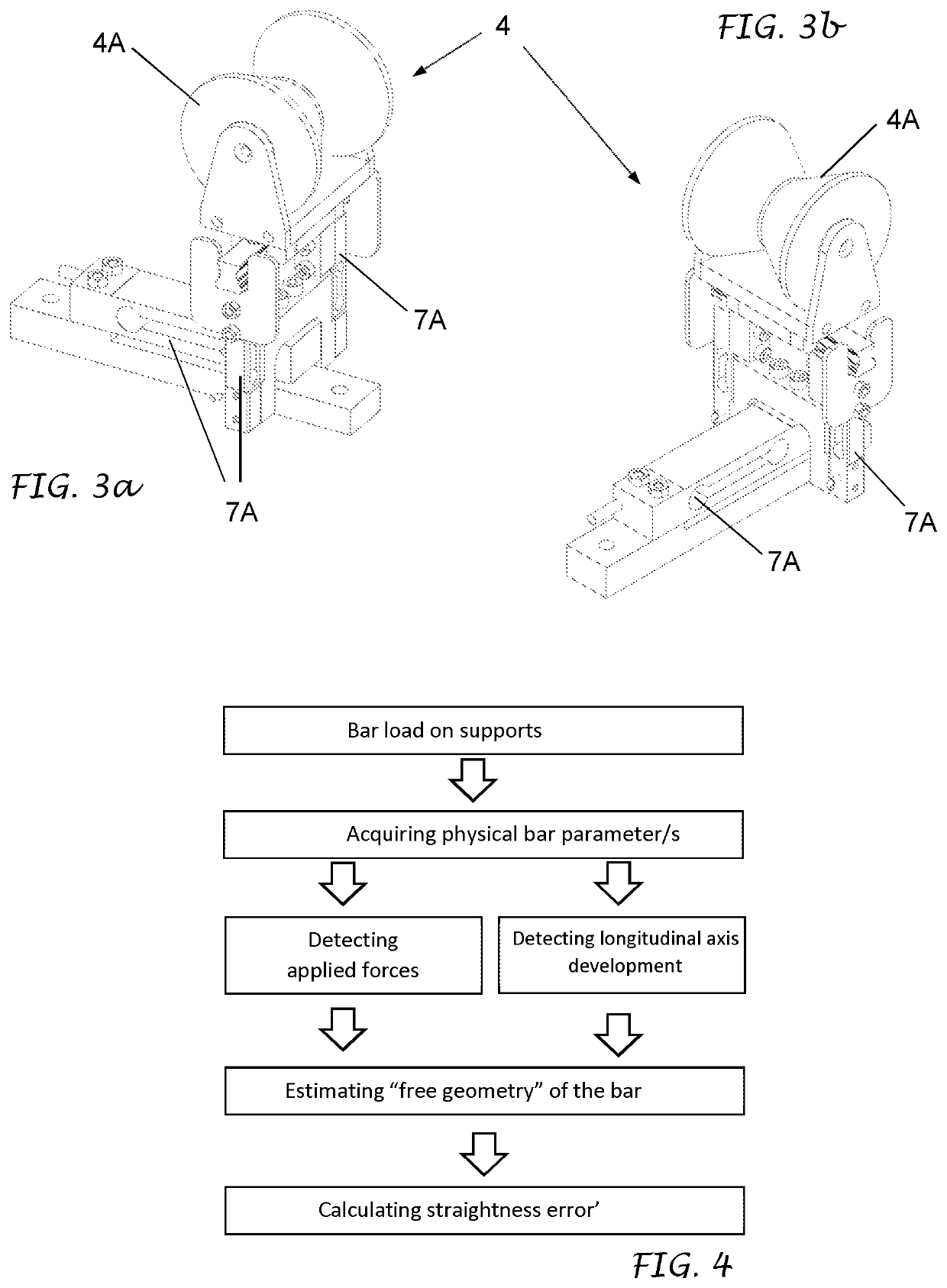Method and apparatus for measuring the straightness error of slender bodies, with compensation of gravity deformation
a technology of slender bodies and straightness errors, applied in the field of measuring apparatuses, can solve the problems of long measurement time, unsuitable for production line implementation, and ineffective system for carrying out dimensional checks on production lines, and achieve the effect of reducing measurement tim
- Summary
- Abstract
- Description
- Claims
- Application Information
AI Technical Summary
Benefits of technology
Problems solved by technology
Method used
Image
Examples
Embodiment Construction
[0043]In said drawings, 1 globally denotes a device for measuring the straightness errors of an elongated-shape element, such as a bar, shaft, tube and the like, hereinafter simply named bar 2. The bar can have a section of any geometry, for example circular, hexagonal, squared, etc., of any size and any material, preferably metal.
[0044]As schematically shown in FIG. 1, the measuring device 1 comprises:[0045]a supporting system 3, which remains static during the measurement cycle of each bar, for supporting the bar and composed of a plurality of fixed bearing elements 4 on which the bar under measuring is arranged. The bearing elements can be moved between one measurement and another whenever necessary;[0046]a first detecting element 5 to detect the development of the longitudinal axis of the bar 2 and comprising one or more first sensors 6, preferably optical sensors, for detecting the tridimensional geometry of the bar under measuring.[0047]a second detecting system 7 to detect th...
PUM
 Login to View More
Login to View More Abstract
Description
Claims
Application Information
 Login to View More
Login to View More - R&D
- Intellectual Property
- Life Sciences
- Materials
- Tech Scout
- Unparalleled Data Quality
- Higher Quality Content
- 60% Fewer Hallucinations
Browse by: Latest US Patents, China's latest patents, Technical Efficacy Thesaurus, Application Domain, Technology Topic, Popular Technical Reports.
© 2025 PatSnap. All rights reserved.Legal|Privacy policy|Modern Slavery Act Transparency Statement|Sitemap|About US| Contact US: help@patsnap.com



